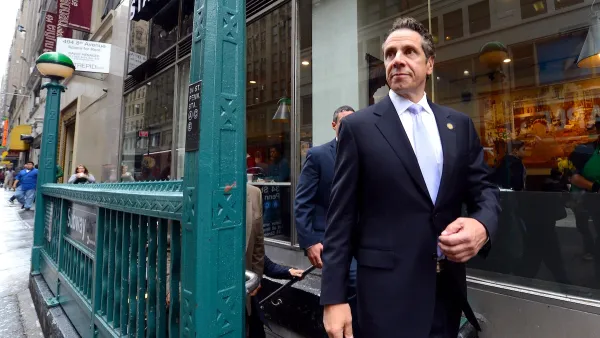A new report examines Toronto’s options for the crumbling Gardiner Expressway and speaks favourably to the city-building and economic benefits of demolishing the elevated eyesore, a view not shared by Mayor Rob Ford.
“Tear it down,” writes David Hains. “That’s the upshot of a new report examining the long-term future of the 2.4 kilometrer stretch of the Gardiner Expressway that runs east of Jarvis.”
“That report is part of a full environmental assessment, necessary because the roadway is crumbling and soon won’t be safe to drive on, or under. The four options that are on the table: maintain the roadway as-is and undertake massive repairs to ensure it is safe; keep the Gardiner but try to improve its aesthetics and the ways it interacts with the public realm; replace it with a new roadway; and remove it altogether.”
The Gardiner Expressway, completed in 1966, is thought by many Torontonians to be a hangover from the days of modernist planning which effectively cuts off downtown from the shores of Lake Ontario. The opportunity to re-connect Toronto with its waterfront comes at a key moment since these forgotten post-industrial lands are currently being transformed into a collection of thriving and sustainable waterfront neighbourhoods. The renewal is coming at enormous expense to the municipal, provincial and federal levels of government.
The removal would come at an estimated cost of $220 million (less that the $300 million cost of repair) but the most contentious loss would come in the form of increased commute times - an estimated 15 minutes for some. Not surprisingly, this doesn’t sit well with Mayor Rob Ford who doesn’t hide the belief that the car is still king.
“In short, this is set to become a major election issue.”
FULL STORY: New Report: Tearing Down the Gardiner is Our Best Bet

Planetizen Federal Action Tracker
A weekly monitor of how Trump’s orders and actions are impacting planners and planning in America.

Maui's Vacation Rental Debate Turns Ugly
Verbal attacks, misinformation campaigns and fistfights plague a high-stakes debate to convert thousands of vacation rentals into long-term housing.

Cuomo Is the Candidate of Both NIMBYs and Developers. What Gives?
In the New York City mayoral race, odd bedfellows align to preserve the housing status quo.

San Antonio and Austin are Fusing Into one Massive Megaregion
The region spanning the two central Texas cities is growing fast, posing challenges for local infrastructure and water supplies.

Charlottesville Temporarily Has No Zoning Code
A judge ordered the Virginia city to throw out its newly revised zoning code, leaving permitting for new development in legal limbo.

In California Battle of Housing vs. Environment, Housing Just Won
A new state law significantly limits the power of CEQA, an environmental review law that served as a powerful tool for blocking new development.
Urban Design for Planners 1: Software Tools
This six-course series explores essential urban design concepts using open source software and equips planners with the tools they need to participate fully in the urban design process.
Planning for Universal Design
Learn the tools for implementing Universal Design in planning regulations.
Heyer Gruel & Associates PA
JM Goldson LLC
Custer County Colorado
City of Camden Redevelopment Agency
City of Astoria
Transportation Research & Education Center (TREC) at Portland State University
Jefferson Parish Government
Camden Redevelopment Agency
City of Claremont



























